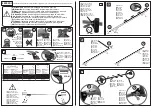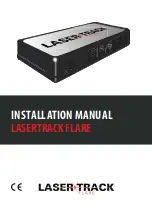
{
CAUTION:
It is dangerous to get out of your vehicle if the
shift lever is not fully in PARK (P) with the
parking brake firmly set. Your vehicle can roll.
Do not leave your vehicle when the propulsion
system is running unless you have to. If you
have left the propulsion system running, the
vehicle can move suddenly. You or others
could be injured. To be sure your vehicle will
not move, even when you are on fairly level
ground, always set your parking brake and
move the shift lever to PARK (P). See
Shifting
Into PARK (P) on page 2-17
.
Make sure the shift lever is fully in PARK (P) before
starting the propulsion system. Your vehicle has a drive
unit shift lock control system. You must fully apply
your regular brake first and then press the shift lever
button before you can shift from PARK (P) when
the start switch key is in SYSTEM ON. If you cannot
shift out of PARK (P), ease pressure on the shift lever,
then push the shift lever all the way into PARK (P)
as you maintain brake application. Then press the shift
lever button and move the shift lever into another
gear. See
Shifting Out of PARK (P) on page 2-18
.
REVERSE (R):
Use this gear to back up.
Notice:
Shifting to REVERSE (R) while your vehicle
is moving forward could damage the drive unit. Shift
to REVERSE (R) only after your vehicle is stopped.
To rock your vehicle back and forth to get out of snow,
ice or sand without damaging your drive unit, see
If
Your Vehicle is Stuck in Sand, Mud, Ice, or Snow
on page 4-16
.
NEUTRAL (N):
In this position, your propulsion system
does not connect with the wheels. To restart when
you are already moving, use NEUTRAL (N) only.
DRIVE (D):
This position is for normal driving.
LOW (L):
You can use LOW (L) on very steep hills, or
in deep snow or mud. The increased deceleration in
LOW (L) comes from regenerative braking. See
Regenerative Braking on page 2-16
.
2-15
Summary of Contents for Equinox Fuel Cell
Page 18: ...Put someone on it Get it up to speed Then stop the vehicle The rider does not stop 1 14...
Page 76: ...NOTES 1 72...
Page 103: ...NOTES 3 3...
Page 104: ...Instrument Panel Overview 3 4...
Page 180: ...NOTES 4 24...
Page 235: ...Maintenance Schedule 6 2 Maintenance Replacement Parts 6 2 Section 6 Maintenance Schedule 6 1...
















































